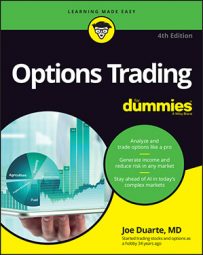- The fundamental condition of the company’s business
- The technical condition of the company’s stock
Stocks without earnings often make very dangerous trading candidates for long‐side trades. Although some special situations may merit your consideration, stocks without earnings carry a special risk. Any hint of unfavorable press sends the stock’s price crashing. Besides, the downside risk is simply too great for our taste.
You also need to consider the company’s size when selecting a trading candidate. Although small companies can and sometimes do return outsized trading profits, they also present problems for traders. Stocks of small companies usually are more lightly traded, which leads to liquidity concerns that make them difficult to buy and even more difficult to sell.You can afford to be patient when entering a trade but not when exiting a position, especially when the stock hits your stop‐loss price. Lightly traded stocks (or ETFs) make exiting a position difficult because the price is likely to fall quickly and dramatically when many traders are trying to exit simultaneously. You’re bound to lose more of your precious trading capital (when selling) or spend more of it (when buying) than you intended.
On the technical side, you want to trade the strongest stocks in the strongest sectors. You want to enter positions in these high relative‐strength stocks as they break out of trading ranges or reversal patterns. And you want to hold them as long as they remain relatively strong compared with other stocks.
